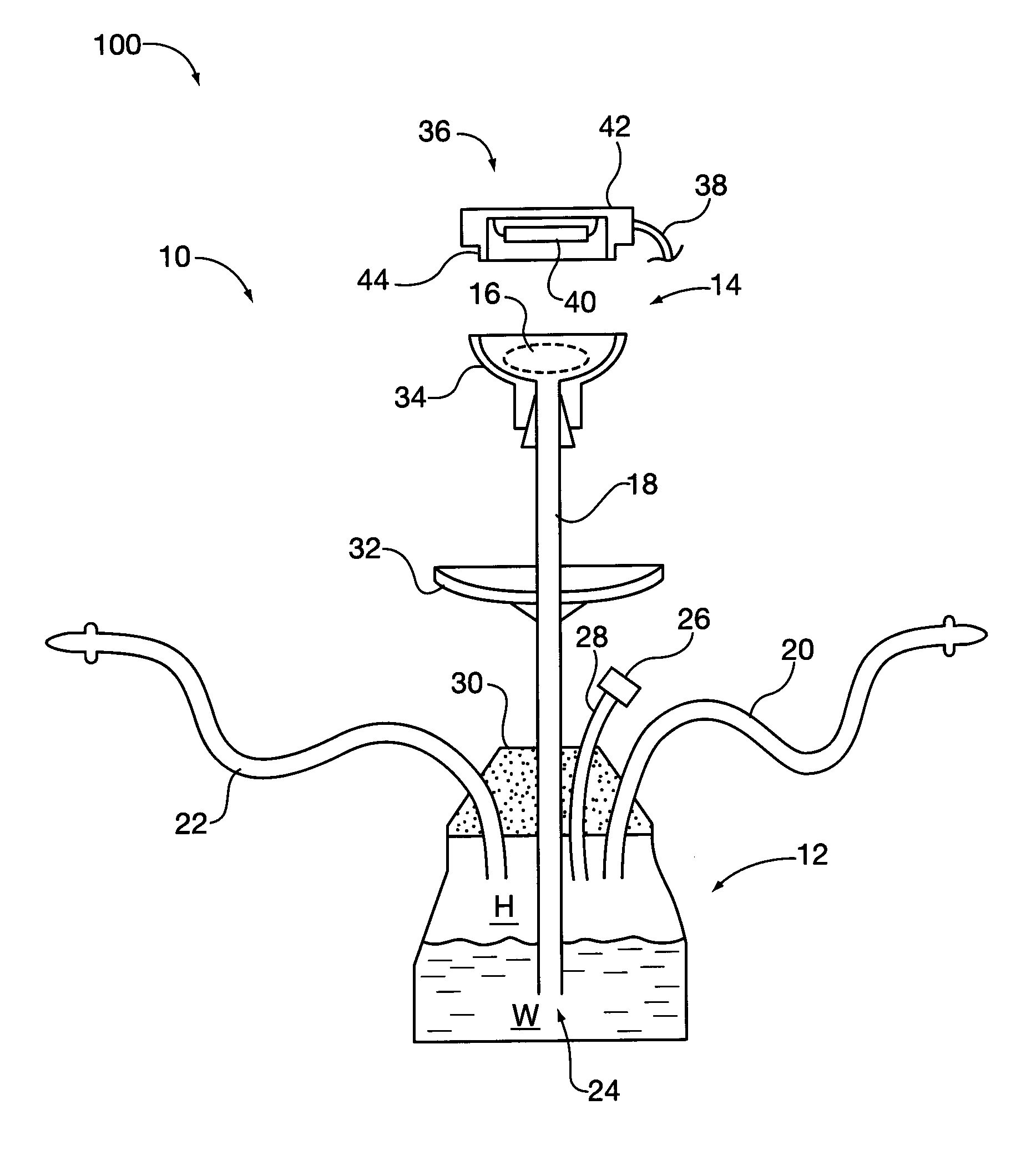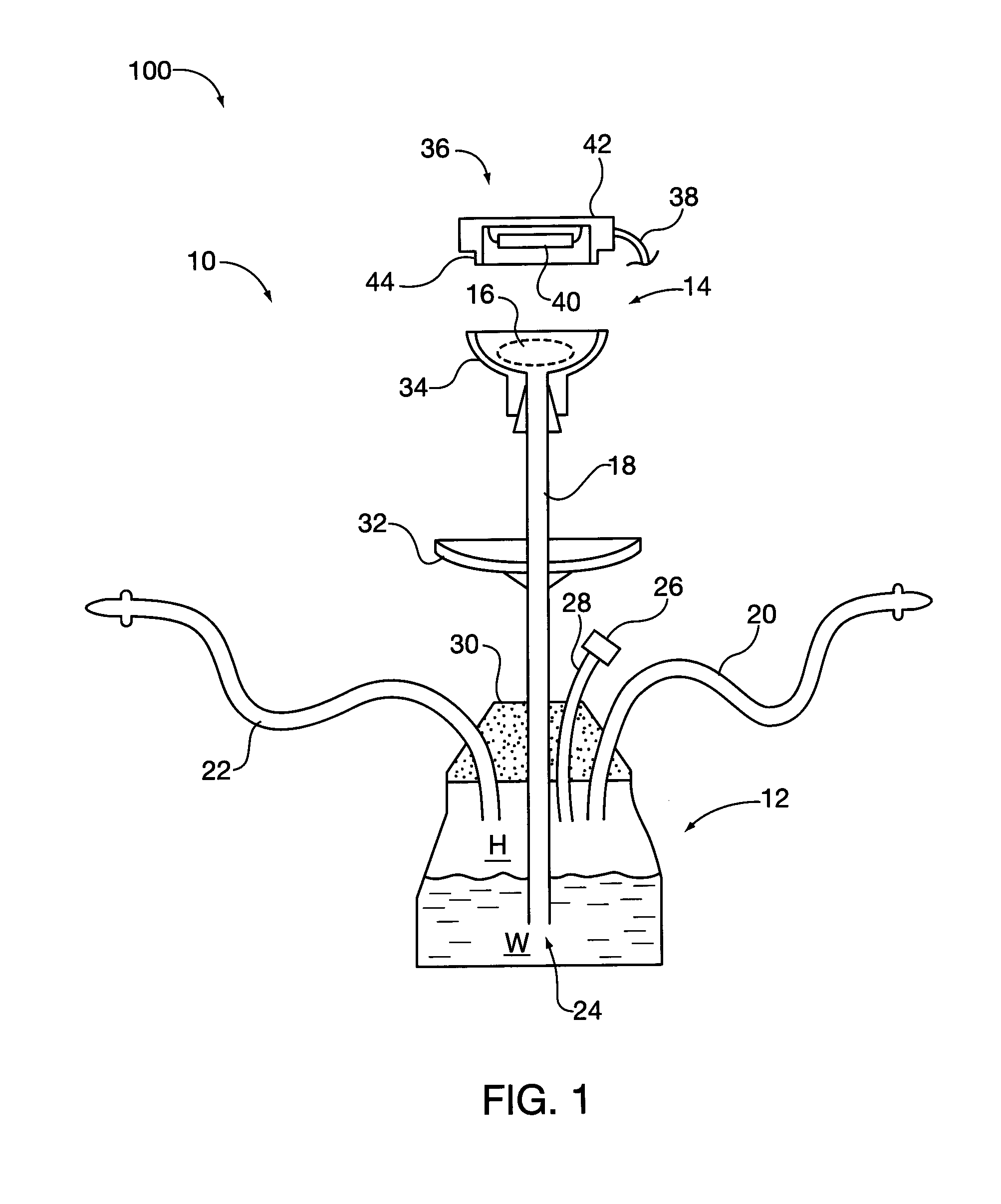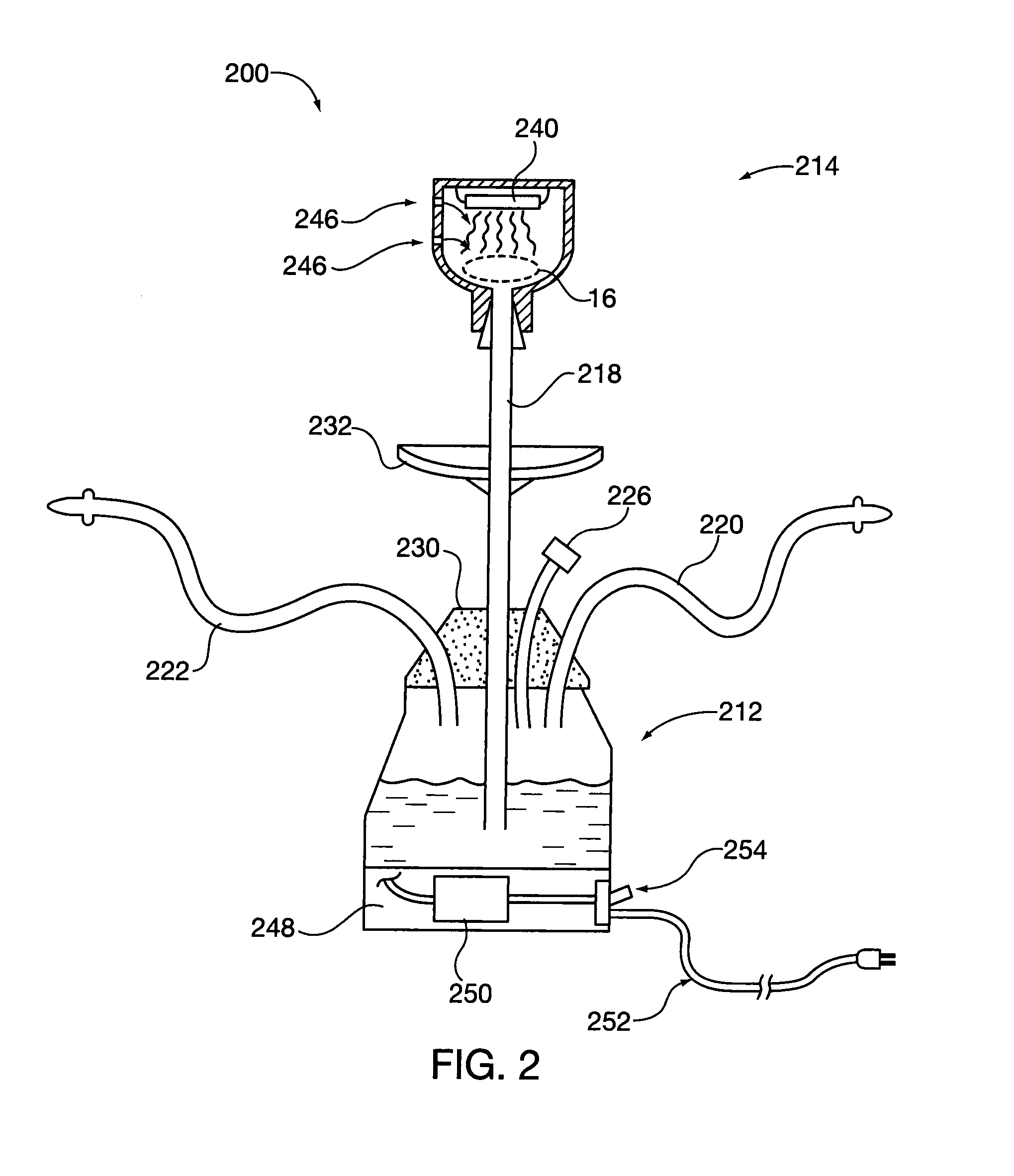Electric heater for hookah
- Summary
- Abstract
- Description
- Claims
- Application Information
AI Technical Summary
Benefits of technology
Problems solved by technology
Method used
Image
Examples
Embodiment Construction
[0035]FIG. 1 shows a simplified hookah type water pipe 100 having an electrical heat source for igniting combustible substances such as tobacco or other smoking material to generate smoke. The hookah type water pipe 100 may comprise a conventional hookah 10 which comprises a liquid chamber 12, a smoking chamber 14 for receiving a combustible substance such as tobacco 16 and for generating smoke (not shown) by subjecting the tobacco 16 to heat. As employed herein, the term “chamber” will be understood to encompass both an enclosed or unenclosed space for performing a specified function and also surrounding structure such as walls, floor, etc., as may be necessary to define and maintain structural integrity of the space.
[0036]In conventional hookahs, heat is generated by placing charcoal (not shown) above or within the smoking chamber 14. The charcoal may be contained in a partially open cage (not shown) which is placed on the tobacco 16 or otherwise in heat exchange relation thereto....
PUM
 Login to View More
Login to View More Abstract
Description
Claims
Application Information
 Login to View More
Login to View More - R&D
- Intellectual Property
- Life Sciences
- Materials
- Tech Scout
- Unparalleled Data Quality
- Higher Quality Content
- 60% Fewer Hallucinations
Browse by: Latest US Patents, China's latest patents, Technical Efficacy Thesaurus, Application Domain, Technology Topic, Popular Technical Reports.
© 2025 PatSnap. All rights reserved.Legal|Privacy policy|Modern Slavery Act Transparency Statement|Sitemap|About US| Contact US: help@patsnap.com



